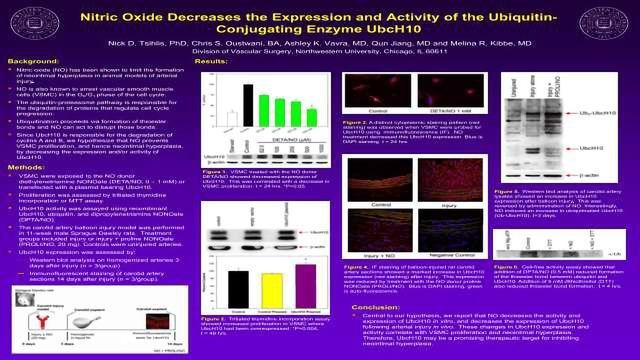Latest Posters

Poster
Novel Concept of Microarray Construction and their Application in Biology
For microarrays produced using spotting technologies, much attention has to be given to the development of slide surfaces, attachment chemistries, and spotting solutions. Application of the optimal and reliable methods ensuring effective binding of DNA probes with slide surface is one of the key factors warranting high quality results. Developments in the field of microarrays occur at a rapid pace and some novel approaches may offer suggestions of new strategies.

Poster
Sub-classification of Colorectal Cancer Using Surface Antigen Antibody Microarray and Fluorescence Multiplexing
Colorectal cancer (CRC) is the second most frequent cause of cancer deaths in Australia. Even after resection up to 50% of patients relapse. In an attempt to prevent recurrences chemotherapy is administered to high risk patients. However, as few as 10-20% patients genuinely benefit because the clinical course for individuals with CRC remains difficult to predict, largely due to prognostically heterogeneous groups within same-stage tumour categories.

Poster
hTERT methylation: a potential cancer biomarker for metastasis detection in body fluids
Aim of the study:
1. To develop a specific, sensitive, quantitative, and fast method for detection of hTERT methylation
2. To explore its use as a cancer biomarker in the diagnosis of metastatic tumors in CSF.

Poster
Strategies for expression and solubility analysis
Production of soluble protein is one of the major bottlenecks that precede crystallographic studies.During the last years several techniques and strategies have been developed to address this problem. However, many of them imply an economical cost and technologies that are not always available. We will describe a general plan for protein solubility analysis by using a combination of four different but complementary strategies. In this plan, different constructs of a protein interest are designed

Poster
mSMRT-qPCR : Robust, Sensitive, Scalable microRNA Quantification
Existing methods for miRNA quantification rely on sequence-dependent probes or chemically modified primers for optimal specificity and often require RNA isolation that is time-consuming labour-intensive and which increase sample variability We have developed a high performance approach for multiplexed detection of mature miRNAs termed modified stem-loop mediated reverse transcription quantitative PCR (mSMRT-qPCR).

Poster
Hyphenated Techniques as Modern Detection Systems in Ion Chromatography
Historically ion chromatography (IC) using conductivity detection has been successfully used for the analysis of ionic (e.g., anions and cations) and polar substances (e.g., organic acids or sugars). However, due to current toxicity concerns, analyses in complex matrices require improved sensitivities and selectivities.

Poster
Stable Isotope Dilution Analysis of Organic Pollutants Using LC-MS/MS (QqQ) and Isotope Pattern Deconvolution
LC-MS/MS equipped with a triple quadrupole (QqQ) in the Selected Reaction Monitoring (SRM) has been widely accepted as the main tool in the identification, structural characterization and quantitative determination of semi-polar and polar organic pollutants in food and environmental samples. However there are limitations with these techniques.

Poster
Nitric Oxide Decreases the Expression and Activity of the Ubiquitin-Conjugating Enzyme UbcH10
Nitric oxide (NO) has been shown to limit the formation of neointimal hyperplasia in animal models of arterial injury. Ubiquitination proceeds via formation of thioester bonds and NO can act to disrupt those bonds. We report that NO decreases the activity and expression of UbcH10 in vitro, and decreases the expression of UbcH10 following arterial injury in vivo. Therefore, UbcH10 may be a promising therapeutic target for inhibiting neointimal hyperplasia.

Poster
AN INTEGRATED 1H NMR, GC-MS AND HPLC-(ESI/TOF) BASED METABOLOMICS APPROACH TO THE STUDY OF ACUTE EXERCISE IN HUMAN SERUM METABOLOME
There is an increasing concern about the different response and effect that acute exercise induces on diabetic people and a novel insight into this effect can be performed using a metabolomic approach. Metabolomic is becoming widely spread used as a new and powerful tool for discerning significant changes at metabolic level. In this study we aimed to perform a non-targeted analysis and to identify metabolic differences arisen after 30 minutes of acute exercise in both young men suffering from Ty

Poster
Sequence-Specific Ni(II)-Dependent Peptide Bond Hydrolysis for Protein Engineering. Combinatorial Library Determination of Optimal Sequences
The sequence-specific cleavage of the peptide bond is a crucial procedure in protein engineering and purification. The extreme stability of this bond, with half-life for spontaneous hydrolysis estimated as 350-600 years at neutral pH and room temperature, limits the range of appropriate cleavage reagents.
Advertisement



